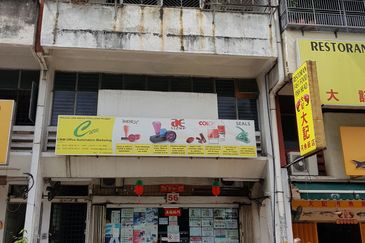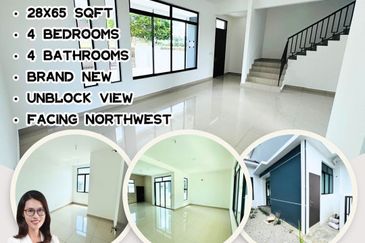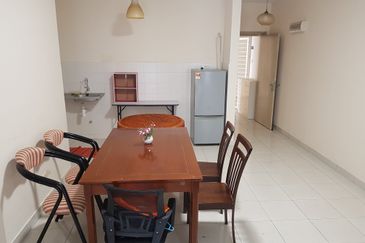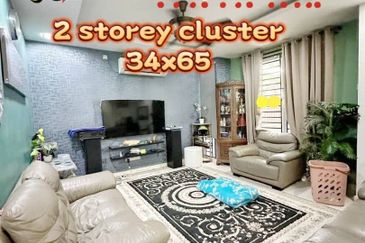
When a person sets out in search of their identity or for deeper answers to the age-old “where do we come from and where are we going” question, it can often lead to surprising and positive results. Some people discover the answers after a long adventure, a sabbatical or while pursuing a different field of work.
In Ee Soon Wei’s case, his research into his family’s history and his own keen interest in preserving cultural heritage all became inextricably linked in his — initially unconscious — journey of self-discovery. For him, the transformation of The Royal Press Museum in Melaka and Art Printing Works (APW) in Kuala Lumpur has been both a professional and personal journey that began from the simple premise of finding out more about his roots.
Ee travelled to Fujian to learn more about his family history upon finding out that they had in their keeping an old Chinese history book dating back to 18th century China. “I didn’t even know how to write my name in Chinese characters,” he says, to underscore how monumental of his decision to take that trip was. Together with a translator, Ee set out to explore Fujian and visit his ancestral home.
Timing played a significant role in Ee’s quest. He explains, “About the fifth or sixth year into my corporate career, I was at a crossroads and decided I wanted to explore the potential of the family business — not so much from a commercial standpoint but because I was very keen on The Royal Press as a conservation project. We then embarked on a journey — I started working on a documentary by the Discovery Channel and there was potential to convert The Royal Press space to a museum, which I thought was very unique.”

First established in 1938, The Royal Press began as a letterpress printing house in Jonker Street, Melaka. Like an ode to the past, it is probably one of the oldest surviving letterpress companies in the world, with a letter-block library with over 150,000 blocks in four languages. Opened by Ee’s grandfather, Ee Lay Swee, The Royal Press had a thriving business after World War II and into the 1950s. It began a steady decline in the 1960s, with the advent of modern printing technology. By 2000, The Royal Press had dwindled to just four staff.
As the eldest grandson, Ee saw the preservation of The Royal Press not just from a personal perspective but also as a unique aspect of Melaka’s cultural history. Through his research, he began to see the space as a communal meeting place, due to Melaka’s position as a port, and a place of genuine interaction, highlighting the importance of the role the community played. Aside from the history of The Royal Press, the building itself held strong historical value, starting out as a Dutch colonial house with an eclectic mix of Dutch, Chinese and Portuguese architectural details.
The conservation project allowed him to begin working on a documentary by Discovery Channel and also made him see the potential of turning The Royal Press into a museum. However, Ee came up against many challenges. The refurbishment revealed how dilapidated the building was, with water seeping through the walls, a termite-infested roof and cracked terracotta floor tiles.

Initially scheduled to open this year, the restoration of The Royal Press has taken longer than expected. Aside from the structural preservation of the building, restoration is also being done to the murals on the arches and walls. Ee has managed to get Yayasan Sime Darby and the CIMB Foundation on board to help fund the works, as well as the support of Professor Phil Cleaver, one of England’s most eminent graphic designers.
Skin off, shell stays
The concept for APW came to fruition after work at The Royal Press Museum in Melaka had stalled for a very long time. Set up in 1952 as a commercial printing factory, APW was originally located in Lebuh Ampang, Kuala Lumpur, before moving to Bangsar in 1965. The factory enjoyed steady business and was one of the busiest printers in the city.
By 2013, the premises was underutilised, but Ee saw the potential of the space. He saw that the print industry was stagnating. Inspired by his time as a student in Melbourne, Australia, where he spent many happy hours interacting with friends in public spaces, he thought APW could be redeveloped into something similar and discussed his plans with the family board.

He says: “I thought, why don’t I bring this concept together? I had a chance to talk to the family, and the board said they didn’t want me to close down the business, [they wanted to] keep the premises, so I took those two variables and started working around them.
“So, what you see today is a response to the constraints and an expression of my own personal creativity. I was trying to bring a lot of what I experienced abroad back here.”
When drafting the plans for APW, design was at the forefront of Ee’s vision. His first decision was to maintain the façade of the warehouse, describing it as keeping the “shell the same, but I changed the skin” and opting for a structured layout that was simple yet meaningful. “Design speaks volumes, how you create spaces and breathe some form of standard into uniformity,” he explains. “Everything in APW is seamless and aligned. I have a keen appreciation for design and all things creative. I didn’t know I had this streak in me until much later. If I’d realised it earlier, maybe I would have studied something like architecture.”

He had intended to build a six-storey pop-up similar to Boxpark in London, which features lifestyle shops and eateries in refitted shipping containers. However, the idea was shelved because of the local climate. Instead, he looked to Asian countries, such as Japan, Taiwan, Singapore and Thailand, for inspiration.
By rebuilding APW in stages, Ee was able to see the daily frustrations that the average Malaysian faces. “I noticed when I came back to work here I had to figure out a lot of things — a cheaper space to park instead of just parking, a cheaper space to look for food instead of [just going anywhere for food]. So, with the lack of these types of spaces, I’m trying to [get all these factors to] conform [to each other] … but you can’t have it all.”
Hub for the creative community
Over the course of three years, APW has become an amalgamation of sorts. Since its steady transformation from 2014, APW aims to be a creative campus where arts, culture, business and technology meet. The commercial printing plant has been repurposed as a co-working space, events space, F&B outlets and pocket parks. Explaining his intentions, Ee says, “What I’m trying to do is allow people to have fun, but put in the education [element] and allow people to respond to it — and it doesn’t have to be an instant response.”

The restoration of APW was done in stages with the café Pulp by Papa Palheta being the first to open in 2014. As more people started to visit APW, Ee made it a point to pay close attention to where they congregate. “We are intentional about space planning and traffic. So for every space I created, I would spend a lot of time observing traffic flow and discovering hot spots in APW. People tend to gravitate to a certain area and I would see where they hang out.”
As a place that seamlessly melds past and present, APW has quickly become a hub for the creative community. On Ee’s part, this was purely unintentional. “I didn’t actually know the creative scene well when I started out — I was building what I was interested in and I just went along with that. Then the creatives became the community that picked up on it and obviously with social media, it took off,” he says.
The co-working space, Uppercase, occupies the top floor of the printing factory, which spans 6,000 sq ft. Far from your traditional office, Uppercase allows like-minded individuals to network and collaborate. The co-working space fits into APW’s creative mould with many people opting to work here instead of renting an office.
The event space also served as a place for temporary relocation of artefacts and machines. Efforts to introduce the younger generation to letterpress printing have proved to be a success with the exhibition "2929: The Royal Press Exhibition at APW" held last year. It highlighted the ongoing preservation efforts and featured artefacts such as The Heidenberg windmill letterpress. The Royal Press also teamed up with local designers from Kongsi Design to come up with a range of lifestyle products in which letterpress artefacts are reinterpreted, such as T-shirts, tote bags and folders.

Community plays a central role in planning APW. Providing facilities to the public that are often overlooked has been part of Ee’s winning formula. “What we want to do is to build creative campuses to accelerate the creative economy, and we do this by providing an integrated infrastructure from transport to lifestyle, F&B and event spaces,” he says. “The main goal for this is to reduce the fatigue of decision-makers who do not have enough space to do their work.”
Aside from Pulp, the food and beverage line-up, known as Paper Plates, is an eclectic mix of restaurants including popular brunch spot Breakfast Thieves, social enterprise restaurant Agak-Agak, pop-up trailer Airstream café, pizza parlour Proof and Japanese-Thai fusion restaurant Kaiju. The layout and size of the restaurants were intentional. “I wanted to create a series of restaurants in close proximity because a lot of restaurants are very large, distant and cold,” Ee says.
He decided to forego having traditional retail space at APW because of the slowing economy. However, it hosts regular weekend bazaars that are very popular, with local independent labels selling a mix of clothes and lifestyle products.
Pocket park
APW also features a pocket park, which is a collaboration with Think City. Known as Projek Poket Pokok, the pocket park is an initiative to introduce more urban green spaces that are accessible to the public. It allows people to congregate and mingle outside — a welcome alternative to meeting indoors and a solution to the lack of greenery at APW. The pocket park features a lighting installation by architect/artist Jun Ong that adds to its clean aesthetic.
The location of APW in Jalan Riong, Bangsar has helped its enduring, cool appeal. A suburb of KL that has undergone several transformations in the past three decades, Bangsar has consistently remained the zeitgeist for what is trending, particularly for people aged 18 to 35. The future of Bangsar’s ever-changing landscape may be uncertain, but Ee seems hopeful that the foundations have been put in place.

“I think it is entrenched enough and the behavioural elements are set in place,” he says. “I say this because safety and security are paramount. Whether the landscape will change, I am not entirely sure, unless the digital platforms don’t want to socially interact anymore. Maybe the variations of the expressions of lifestyle and restaurants may change because people are more health-conscious now, with more vegan restaurants, yoga studios and less clothing shops. I also hope Bangsar will become more pedestrianised.”
The regeneration of The Royal Press and APW has not gone unnoticed locally and internationally. The Royal Press was first featured in Monocle magazine three years ago, and it recently featured APW in an article discussing urban redevelopment spaces. Ee was also invited to speak at a Harvard Asia Business Conference recently by Harvard Business School as one of the panellists. And he spoke at the Harvard Graduate School of Design after one of the Malaysian students on the course highlighted APW as part of an architectural project.
Ee hopes to replicate the successful concept of APW, but in another part of Kuala Lumpur. The focus may also change, depending on the locale. Whatever happens in the future, Ee’s decision to restore The Royal Press has already served as inspiration for more people to come forward to save and preserve old buildings or institutions. Perhaps it is the adage of artist Victor Chin, famous for his watercolour paintings of old shophouses, that sums up best the end result of such good efforts: “A city without old buildings is like a man without memory”.
This article first appeared in Options, a pullout of The Edge Malaysia, on Aug 21, 2017.
For more stories, download EdgeProp.my pullout here for free.
TOP PICKS BY EDGEPROP

Premium Height @ Bandar Dato Onn
Johor Bahru, Johor

Kenny Hills - Luxury Twin Bungalow (27000sf land)
Kenny Hills (Bukit Tunku), Kuala Lumpur

Park Residence Springhill
Port Dickson, Negeri Sembilan

Taman Mawar, Bandar Baru Salak Tinggi
Sepang, Selangor

Sri Petaling KL First Floor Shop For Rent
Bandar Baru Sri Petaling, Kuala Lumpur




















